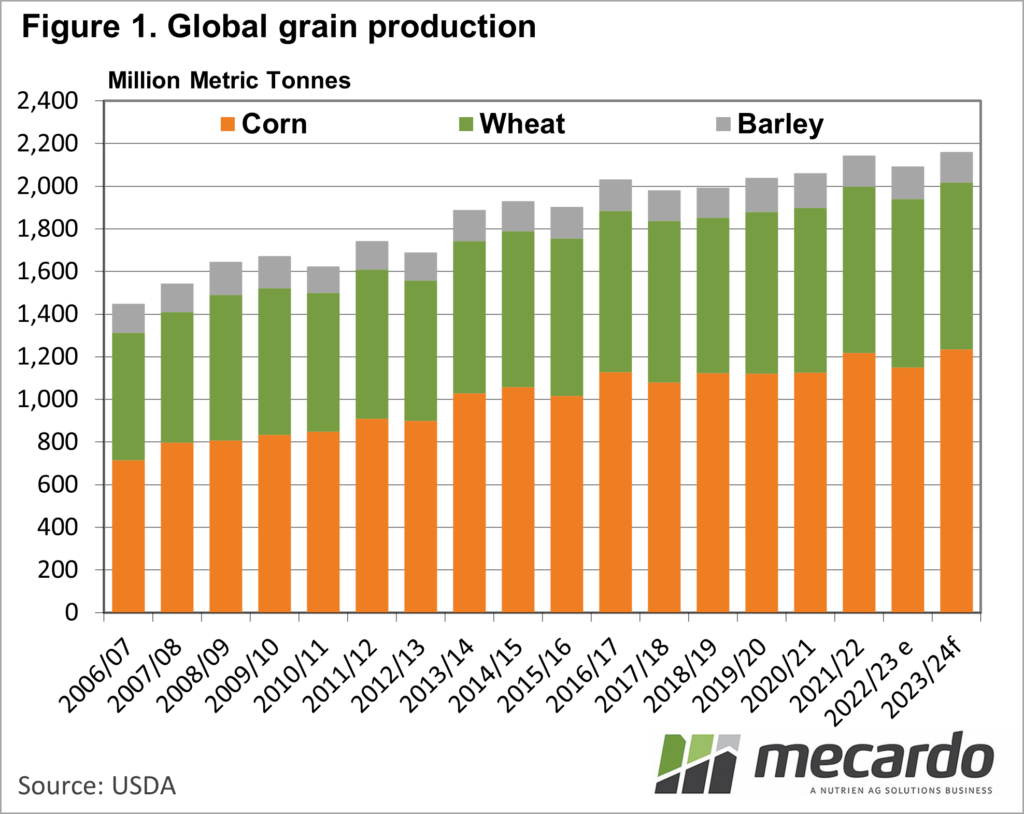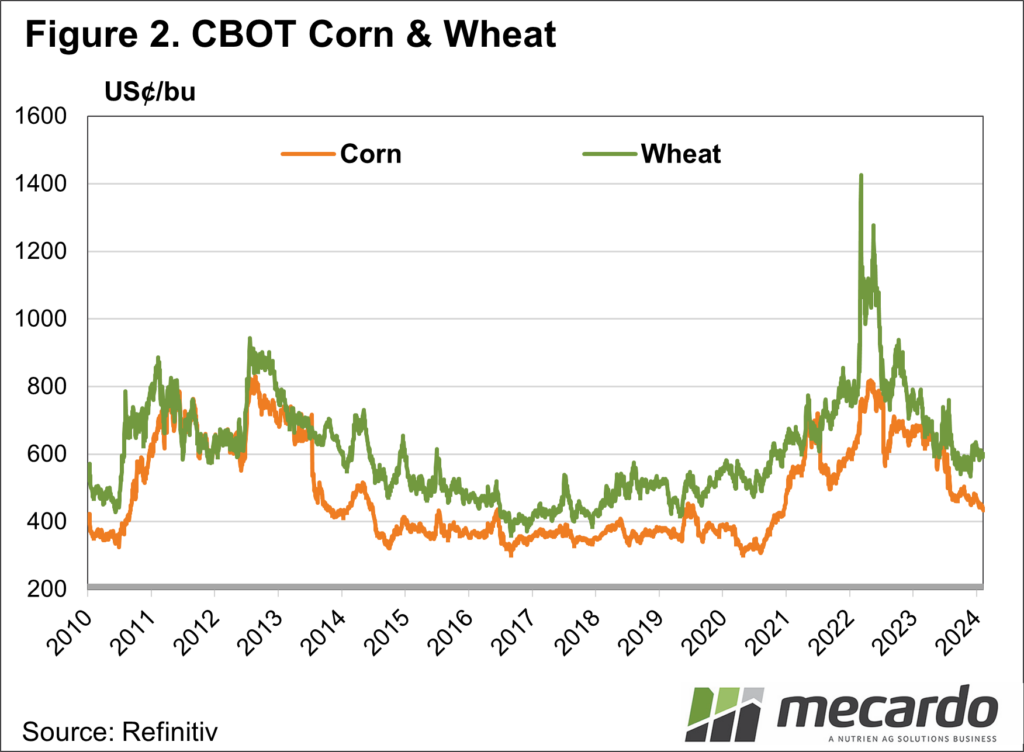A couple of weeks ago we took a look at feed grain prices, showing how strong world corn supplies were depressing global feed values, and hence feed grain prices here in Australia. With murmurs of a potential La Nina, it will be US corn and soybean crops that suffer, here we look at how this might create the next big price rally.
The Bureau of Meteorology
has copped a lot of heat in recent times over forecasts of hotter, dryer
conditions in 2023 when for many areas of Australia, mild and wetter conditions
prevailed. Regardless, the BOM is still
the place to find climate forecasts.
The most recent (‘Climate
Driver Update) released last week (read here) shows
the average of international model forecasts are currently sitting at Neutral
for June. We can see that the dial is
swinging back from El Nino toward neutral over the coming four months.
A neutral average
forecast suggests that some models are pointing towards La Nina, and others
remaining in the El Nino range, so it would seem climate forecasts are showing
no real consistency at the moment.
While La Nina
historically produces big crops here, across the Pacific it has the opposite
impact. Figure 1 shows global grain
production over the last 18 years. When
La Nina was in action in 2022-23 we can see that global grain production
dropped away from a record high. The
record high was set in a La Nina year though, so like El Nino, the impact is
not consistent or assured.
Argentina, Brazil, and
the US account for 43% of world corn production outside of China. Figure 1 shows corn is the world’s largest
grain crop, and as such impacts prices of all grain commodities.
Figure 2 shows corn
and wheat futures contracts with two major corn rallies associated with La Nina
years. From July 2010 to January 2011 corn
prices close to doubled on the back of production declines. We saw a similar rally in August 2020. Even though global corn production remained
steady in the end, ever-increasing consumption saw corn prices more than
double.
What does it mean?
While there is little evidence to suggest a La Nina is coming this year, we can see why markets get jittery at even the mention. Speculators certainly don’t want to be caught short in a La Nina market, while Australian growers, in general, will welcome a boost in world prices, and an associated bumper crop.
Have any questions or comments?
Key Points
- Climate models are pointing towards more neutral conditions in 2024.
- Twice in the last 14 years La Nina has caused corn prices to double.
- US grain markets get jittery at even the mention of La Nina.
Click on figure to expand
Click on figure to expand
Data sources: USDA, CME, Refinitiv, Mecardo














